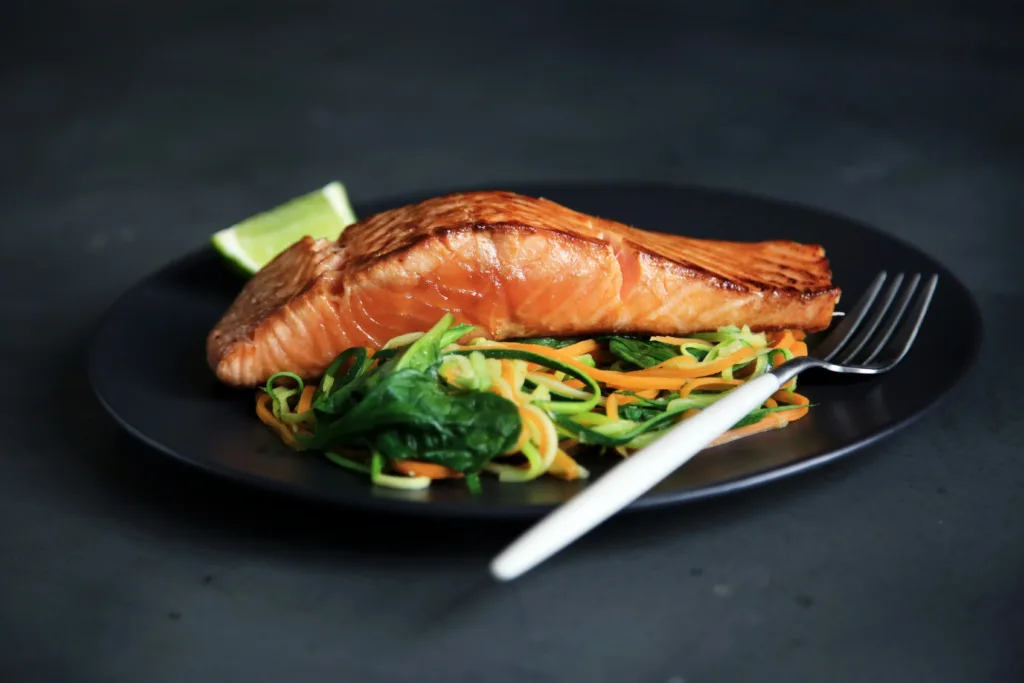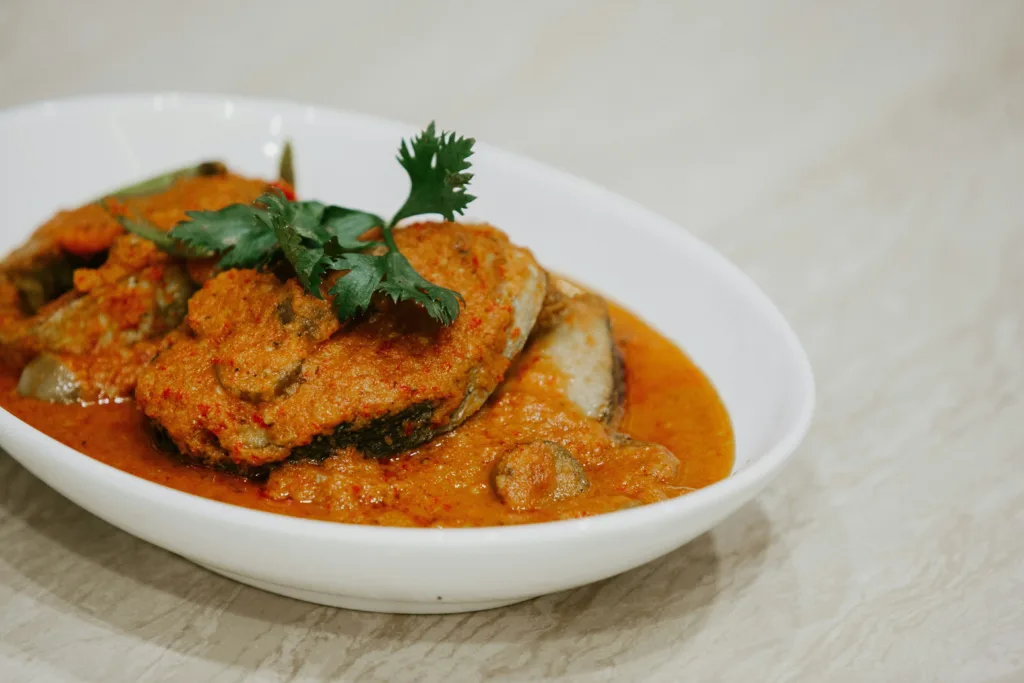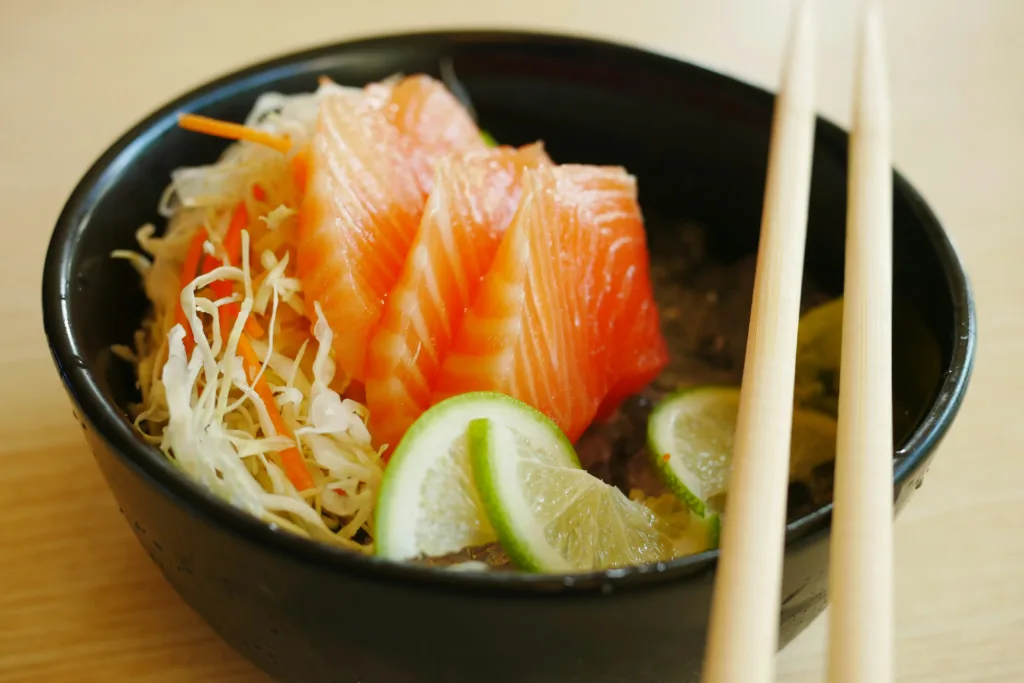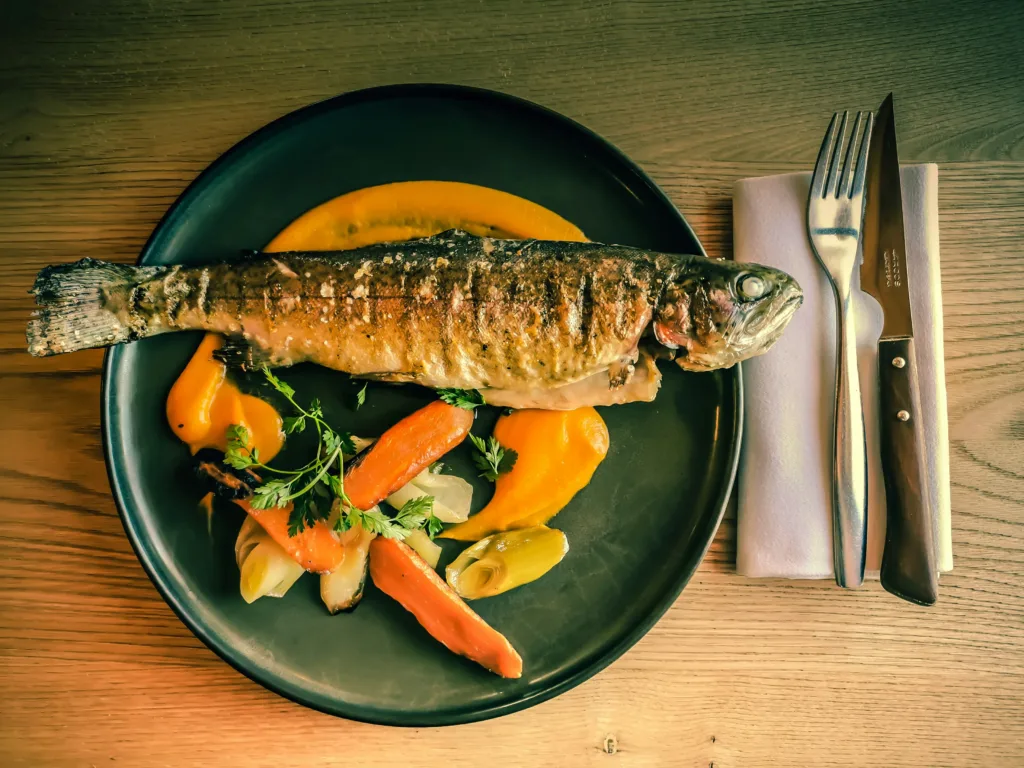Switching to a pescatarian diet doesn’t have to be complicated or expensive, and no, it’s not just eating salmon seven days a week. If you’re trying to eat a little healthier, cut back on meat, or just bring more variety into your meals, going pescatarian is a solid place to start. It gives you the flexibility of a mostly plant-based diet while still including fish and seafood for that extra boost of protein and healthy fats.
The challenge? Figuring out what to eat day-to-day without falling into a routine of bland meals or endless pasta. That’s where this guide comes in. Instead of giving you vague ideas or rigid rules, this pescatarian meal plan is built for real life. It’s got a little structure, plenty of variety, and meals that won’t leave you hungry (or bored). Let’s get into it.
Switching to a pescatarian meal plan is a great way to eat more seafood and plant-based foods, but staying organized can be a challenge when your recipes are scattered across social media, notes apps, and random bookmarks. That’s exactly why we built ReciMe – to help turn saved recipes into actual meals you can cook during the week. You can collect recipes from Instagram, TikTok, Pinterest, or anywhere else, organize them by meal type or tag them as “pescatarian,” and drag them into a weekly plan. ReciMe automatically pulls the ingredients into a grocery list you can sort by recipe or by supermarket aisle, which makes shopping less of a mess. You can also scale servings, convert measurements, and see basic nutrition info. It’s available on iOS, Android, and as a Chrome Extension, and everything syncs to the cloud so your plan travels with you. Try now!


What Is a Pescatarian Diet?
A pescatarian diet is basically a vegetarian diet with one exception: it includes seafood. No red meat, no poultry. Just fish, dairy, eggs, and plant-based foods like fruits, vegetables, grains, legumes, nuts, and seeds. It’s a pretty flexible way of eating that gives you all the benefits of a plant-forward lifestyle without cutting out fish, which is rich in protein and healthy fats like omega-3s.
Most pescatarians include dairy and eggs, though some go without. The key idea here is to keep things balanced. You get the heart-healthy perks of seafood, the fiber from plant-based foods, and none of the heaviness that can come from a diet filled with processed meats or excess saturated fat.

Why Go Pescatarian?
If you’re even considering this way of eating, you’re probably aware that a lot of people are moving toward more sustainable, health-conscious food choices. That’s where pescatarian meals come in handy. Here are a few reasons people make the switch:
- Omega-3 benefits from fish like salmon, sardines, and mackerel
- Lower cholesterol compared to meat-heavy diets
- Easier digestion for many people
- More variety than standard vegetarian eating
- Budget-friendly flexibility if you alternate between seafood and vegetarian meals
Plus, it’s easier to stick to than strict vegetarian or vegan diets for people who love sushi, grilled fish, or shrimp pasta but still want to clean up their eating habits.
What a Pescatarian Eats (and Doesn’t)
Before we get into the meal plan, let’s clear up the basics.
Yes to:
- Fish and seafood (tuna, salmon, shrimp, scallops, tilapia, etc.)
- Eggs and dairy (milk, yogurt, cheese, butter)
- Grains (rice, quinoa, oats, pasta, whole grain bread)
- Fruits and vegetables (all of them)
- Legumes and plant protein (beans, lentils, tofu)
- Healthy fats (avocado, olive oil, nuts, seeds)
Skip:
- Red meat (beef, lamb, pork, etc.)
- Poultry (chicken, turkey, duck)
- Meat-based broths or sauces

Let’s Talk Meal Planning
Here’s the thing: the hardest part of sticking to a pescatarian diet isn’t usually the fish. It’s figuring out what to eat day after day without defaulting to pasta or avocado toast every time. The goal of this plan is to take the guesswork out of your week. We’re going for variety, simplicity, and flavor. Nothing too fancy, but definitely not boring.
A few tips to keep in mind:
- Mix seafood and vegetarian meals to balance cost and prep time
- Use batch-prepped ingredients like roasted veggies or boiled eggs
- Choose fish that’s easy to find and cook
- Don’t forget about seasoning – lemon, herbs, chili flakes, and garlic go a long way
7-Day Pescatarian Meal Plan
Here’s a full week of breakfast, lunch, and dinner ideas. Meals are designed to be realistic and adjustable. If you’re hungry, add snacks like hummus and veggies, yogurt with fruit, or a protein ball between meals.
Day 1
Breakfast – Avocado Baked Eggs with Toast
Crack eggs into halved avocados and bake until the whites are set. Sprinkle with salt and chili flakes. Serve with a slice of toasted whole grain bread to keep you full through the morning.
Lunch – Mackerel and Green Bean Salad with Eggs
Pan-sear or grill mackerel fillets, then toss with lightly blanched green beans, soft-boiled eggs, and a mustard vinaigrette. Add some baby potatoes if you want something more filling.
Dinner – Sweet Potato & Chickpea Massaman Curry
Simmer cubed sweet potato and canned chickpeas in a coconut milk-based curry with Thai massaman paste. Serve warm with a scoop of brown rice or naan if you like.
Day 2
Breakfast – Spanish Egg Muffins with Peppers and Onions
Whisk eggs with chopped bell peppers, red onions, and a bit of cheese. Pour into muffin tins and bake. These keep well in the fridge for grab-and-go mornings.
Lunch – Lemon-Parmesan Tilapia with Quinoa Salad
Coat tilapia fillets in grated parmesan and lemon zest, then bake until golden. Serve with a quinoa salad made with cucumber, cherry tomatoes, and olive oil.
Dinner – Moroccan-Spiced Stuffed Sweet Potatoes
Roast halved sweet potatoes until soft, then stuff them with sautéed lentils, garlic, and a warm Moroccan spice blend. Add a spoonful of yogurt or tahini on top for creaminess.
Day 3
Breakfast – Huevos Rancheros with Black Beans
Warm corn tortillas and top with refried black beans, sunny-side-up eggs, and a spoonful of salsa. Garnish with avocado slices and a sprinkle of cheese if you have it.
Lunch – Greek Chickpea Salad with Feta and Tomato
Mix canned chickpeas, chopped cucumber, tomatoes, red onion, and feta cheese. Dress with olive oil, lemon juice, and oregano. Tastes even better after sitting for a bit.
Dinner – Garlic Shrimp Stir-Fry with Brown Rice
Sauté shrimp with garlic, ginger, and sesame oil. Toss in snow peas or broccoli, and serve over a bed of warm brown rice. Add soy sauce or chili flakes to taste.
Day 4
Breakfast – Avocado Toast with Sautéed Mushrooms
Toast your favorite bread, smash half an avocado on top, and pile on sautéed mushrooms cooked with garlic and thyme. Optional: add a poached egg to make it heartier.
Lunch – Curried Lentil Soup with Naan
Simmer red lentils with onion, garlic, curry powder, and coconut milk until thick and fragrant. Serve with warm naan or a slice of whole grain bread for dipping.
Dinner – Grilled Salmon with Asparagus and Couscous
Grill salmon fillets with lemon and herbs. Roast asparagus on the side with olive oil and salt. Serve everything with a scoop of fluffy couscous.

Day 5
Breakfast – Sardine Toast with Lemon and Chili Flakes
Spread mashed avocado or cream cheese on toasted rye bread. Top with canned sardines, a squeeze of lemon juice, and a pinch of chili flakes. It’s quick and surprisingly delicious.
Lunch – Vegetarian Enchilada Bowl
Layer cooked rice with seasoned black beans, corn, avocado slices, and shredded cheese. Top with salsa or enchilada sauce and microwave until warm and melty.
Dinner – Pesto Tuna Pasta with Sun-Dried Tomatoes
Stir canned tuna, sun-dried tomatoes, and spinach into cooked pasta with a generous scoop of pesto. Add grated parmesan or lemon zest for extra flavor.
Day 6
Breakfast – Smoked Salmon Egg Muffins with Chives
Mix eggs, chopped smoked salmon, and chives, then pour into muffin tins and bake. These are great for making ahead and reheating in the microwave all week.
Lunch – Sweet Potato & Peanut Soup with Whole Grain Bread
Simmer sweet potatoes with garlic, ginger, and a spoonful of peanut butter until soft, then blend into a smooth soup. Serve with a slice of toasted bread.
Dinner – Pan-Seared Halibut with Greens and Mashed Potatoes
Cook halibut fillets in olive oil until golden on the outside. Serve with sautéed greens like spinach or kale, plus a side of garlicky mashed potatoes.
Day 7
Breakfast – Blueberry & Lemon Muffins with Greek Yogurt
Pair a couple of blueberry and lemon muffins with a scoop of plain Greek yogurt and a drizzle of honey. It’s a weekend-worthy breakfast that still feels light.
Lunch – Udon Noodle Soup with Tofu and Veggies
Simmer tofu cubes, mushrooms, and bok choy in vegetable broth with soy sauce and ginger. Add cooked udon noodles and top with scallions and chili oil if you like heat.
Dinner – Grilled Salmon Kebabs with Couscous and Cucumber Cups
Thread salmon chunks onto skewers with bell peppers and onions, then grill or roast. Serve with lemon couscous and cucumber rounds topped with hummus or tzatziki.
Grocery Tips That Actually Help
Planning meals is one thing. Shopping for them is another. Here’s how to keep it simple:
- Pick two types of fish for the week and use them in multiple meals
- Buy frozen seafood when fresh isn’t available
- Choose canned staples like tuna, sardines, or salmon for quick meals
- Lean into versatile veggies like sweet potatoes, spinach, bell peppers, and zucchini
- Get legumes in bulk – chickpeas, black beans, and lentils go a long way
- Prep some snacks like protein balls or cut veggies with hummus

Key Benefits of Eating Pescatarian
It’s not just about eating more fish. The pescatarian diet offers a flexible and balanced way of eating that naturally supports better nutrition and a less stressful relationship with food. Many people notice they have steadier energy throughout the day, which often comes from getting more healthy fats and cutting back on refined carbs. The inclusion of fiber-rich vegetables and legumes tends to make digestion smoother too, especially for those who’ve struggled with heavier, meat-based meals in the past.
Another big plus is how manageable it feels. You’re not counting every bite or feeling overly restricted, but you still end up with meals that support weight balance and leave you satisfied. From a health perspective, adding fish rich in omega-3s while lowering saturated fat can give your heart a boost without much effort. And for anyone trying to make more environmentally conscious food choices, replacing red meat with seafood is a step in the right direction that still allows for variety and enjoyment.
Conclusion
Starting a pescatarian meal plan doesn’t mean flipping your whole routine upside down overnight. It’s more about finding a rhythm that fits your week and feels doable. Maybe you try fish three times this week instead of once. Maybe lunch shifts from deli meat to a chickpea salad. Small moves still count.
Use this plan as a foundation. Tweak it. Repeat your favorite meals. Skip what doesn’t work. If you’re using the ReciMe app, the real benefit isn’t perfection – it’s not having to dig through screenshots or remember which TikTok had that salmon bowl you liked. We just give you structure, so cooking at home doesn’t feel like a full-time job. That’s what makes it stick.
FAQs
What if I don’t like seafood?
You can still follow a pescatarian plan and lean more heavily on vegetarian meals. Think bean soups, lentil curries, or veggie stir-fries. Fish isn’t mandatory at every meal, it’s just part of the mix.
Can I do this if I’m on a budget?
Definitely. Frozen seafood, canned tuna or sardines, and bulk grains or legumes go a long way. You don’t have to buy fresh salmon every week. Just plan around what’s affordable where you live.
Do I need to eat fish every day?
Not at all. Many pescatarians only eat seafood a few times a week. The rest of their meals come from plants, dairy, eggs, and pantry staples. You can shift the balance depending on what you like or what’s in your fridge.
Is this meal plan okay for kids or families?
Most meals in this plan are family-friendly and easy to scale. You might need to adjust spice levels or serving sizes, but there’s no reason this way of eating can’t work for households with kids.
How do I know if I’m getting enough protein?
Pescatarian diets can easily meet your protein needs through fish, eggs, dairy, legumes, and whole grains. If you’re tracking your intake, ReciMe includes nutrition info for every recipe, which helps you stay on top of it without doing the math yourself.
Can I use this plan for weight loss?
It depends on your portions and food choices, but yes, it can support healthy weight management. The meals are filling, balanced, and less processed, which helps many people eat more mindfully without counting every calorie.
What’s the best way to stick with it long term?
Make it flexible. Repeat meals you enjoy. Keep staples on hand. And use ReciMe to take the mental load off planning and shopping. When it feels easier, it’s easier to keep going.
